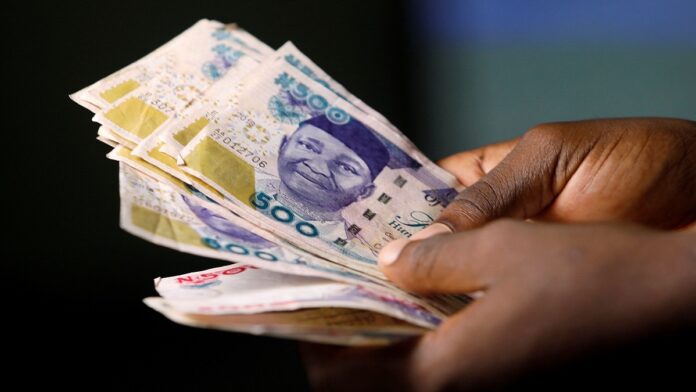Bond, T-Bills Yields Spike, OMO Prints 4.1% as Naira Falls
The average yield on fixed income instruments has seen a moderate increase and today, the Federal Government of Nigeria’s (FGN) bonds and Treasury bills yields spike while open market operation (OMO Bills) remained steady at 4.1%.
In the investors and exporters’ foreign exchange (FX) window, the Nigerian local currency, the naira, shed value against the United States dollar again.
Data from the FMDQ Exchange platform shows that naira depreciated by about 0.2% to N419.33 per dollar despite the rebate the Central Bank of Nigeria offered to exporters who transact via the official window. Naira had dropped to N419.50 but reversed the line amidst market intervention by the apex bank.
In the money market, pressures on the liquidity position in the financial system drove short term rates higher. The average interbank rate surged on the back of rising open buy back and overnight lending rates.
Today, market data shows that the overnight lending rate expanded by 375 basis points to 12.5% due to what Cordros Capital analysts call the absence of significant inflows into the system.
Trading activities in the Treasury bills secondary market ended on a mixed note, albeit with a bearish tilt, as the average yield expanded slightly by 1bp to 3.7%, according to traders’ note.
Cordros Capital said across the curve, the average yield was flat at the mid and long segments but expanded at the short (+5bps) end following sell-offs of the 92DTM (+30bps) bill. Elsewhere, the average yield in the OMO segment remained unchanged at 4.1%.
Also, traders spotted that bearish sentiments dominated the FGN bond secondary market, as the average yield expanded by 8 basis points to 11.1%. Debt Management Office reported today that N225 billion FGN bonds -reopening and new issue – were heavily oversubscribed.
Across the benchmark curve, it was noted that the average yield expanded at the short (15bps) and mid (+12bps) segments as investors sold off the MAR-2025 (+66bps) and APR-2022 (+11.83ppts) bonds, respectively.
However, the average yield on bonds instrument contracted at the long (-2bps) end as investors demanded the MAR-2050 (-13bps) bond.
In response to questions about the market direction, some fixed income analysts told MarketForces Africa that high and prolonged inflation is also likely to result in higher market volatility in the second quarter of 2022.
This may cause net outflows from the asset managers, further reducing earnings. Higher coupons and lower bond prices could ultimately attract bargain hunter investors back into bonds, especially if bond yields move higher than dividend yields. #Bond, T-Bills Yields Spike, OMO Prints 4.1% as Naira Falls
READ: Treasury Bills Yield Prints at 5.14%, Naira Steadies Again












